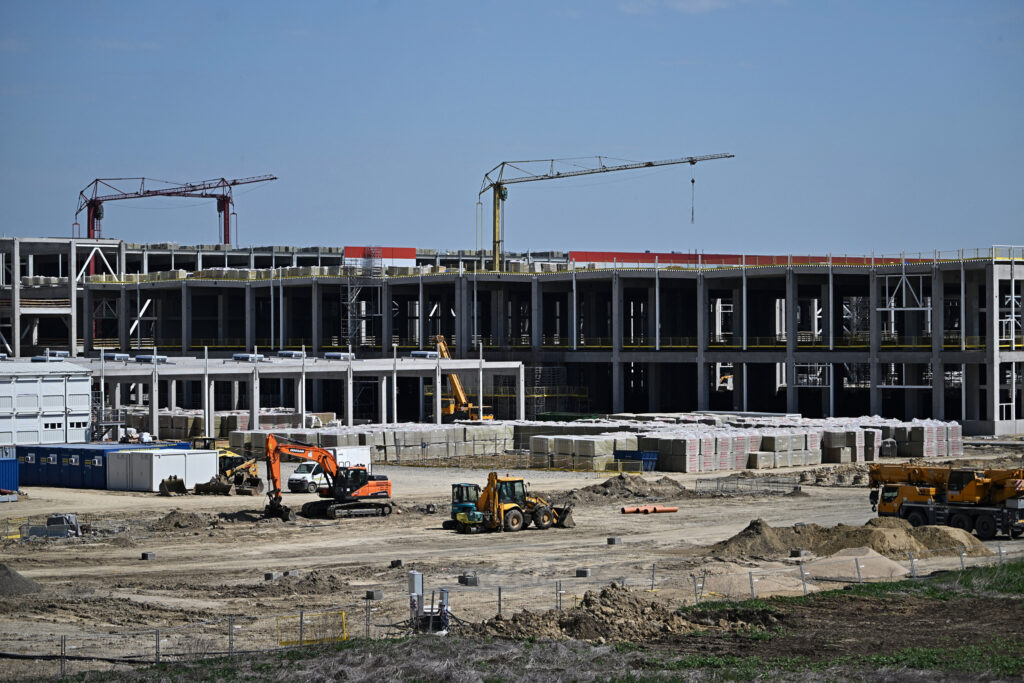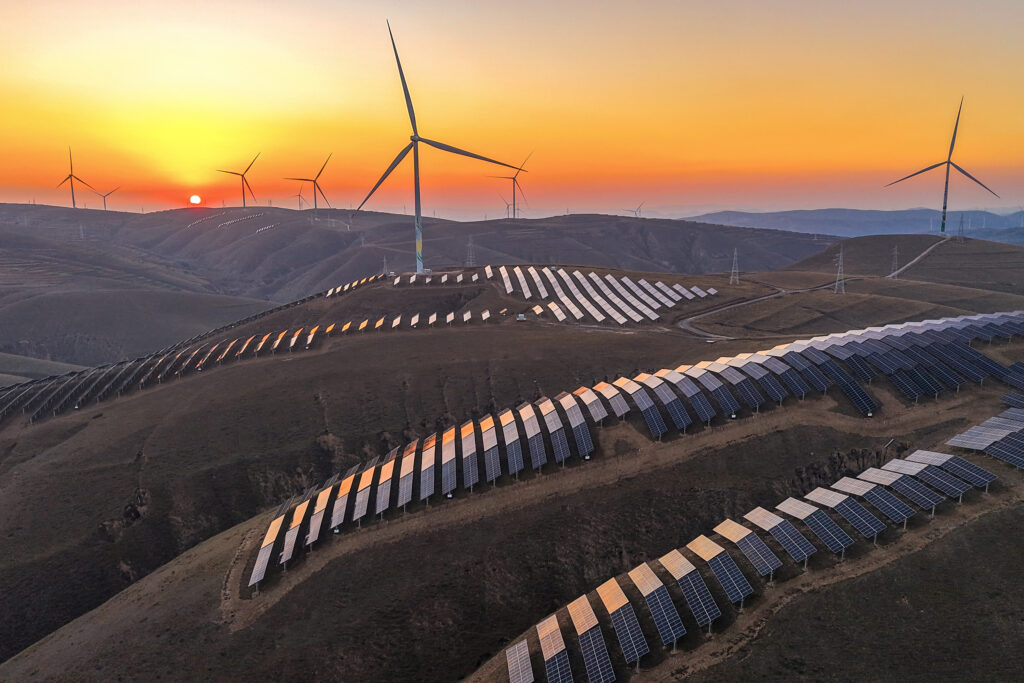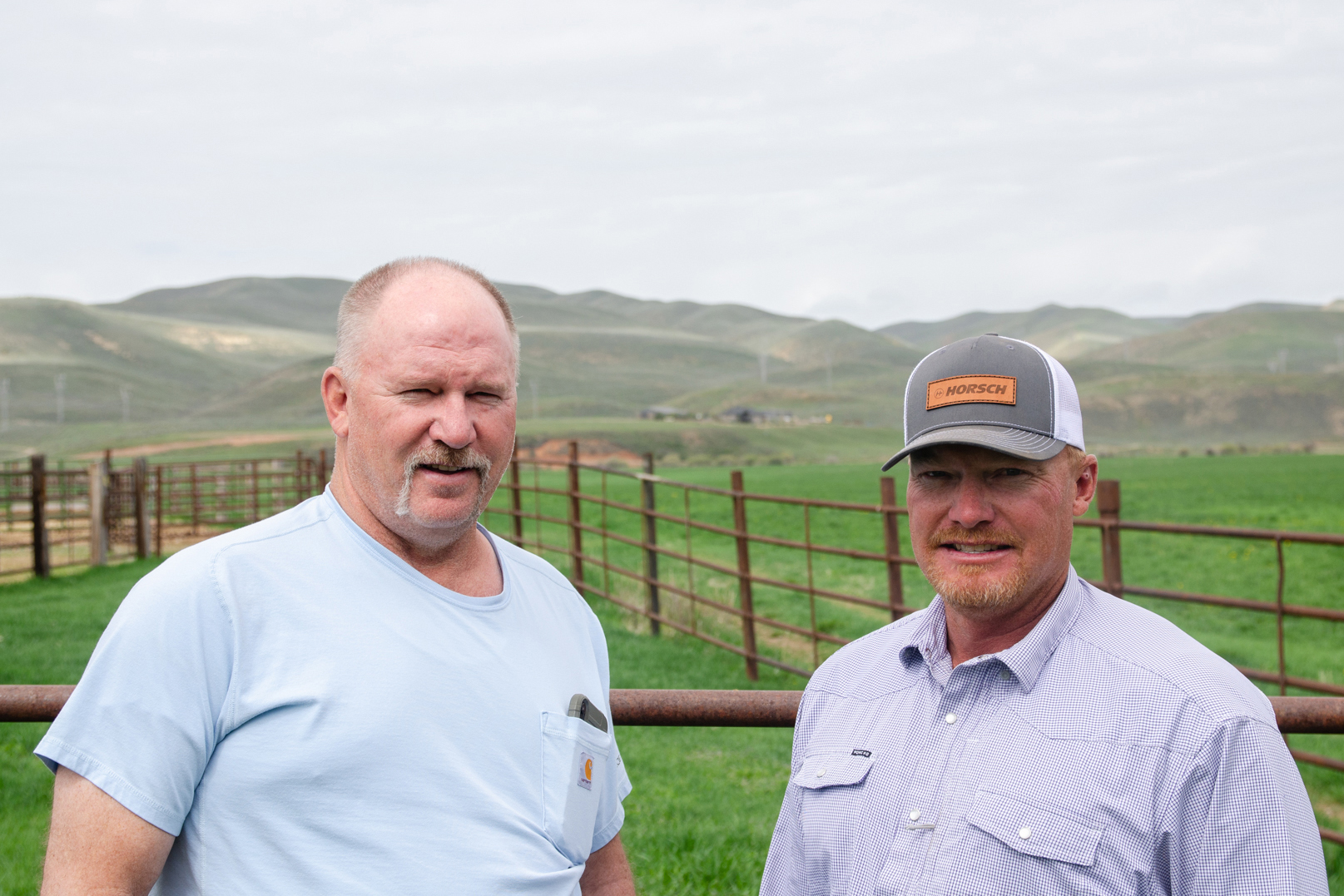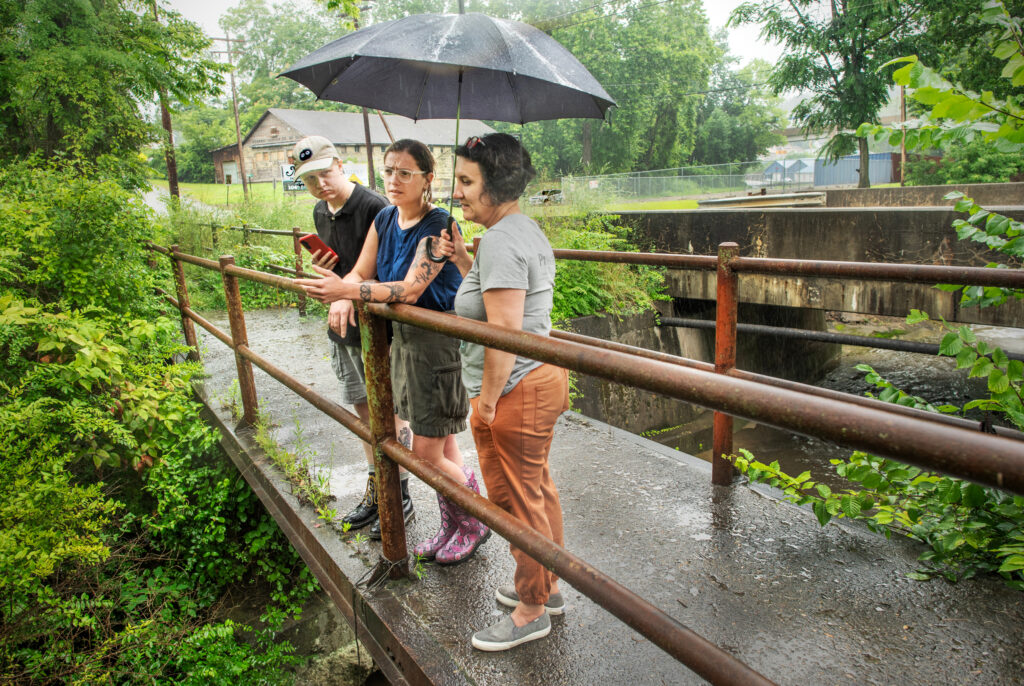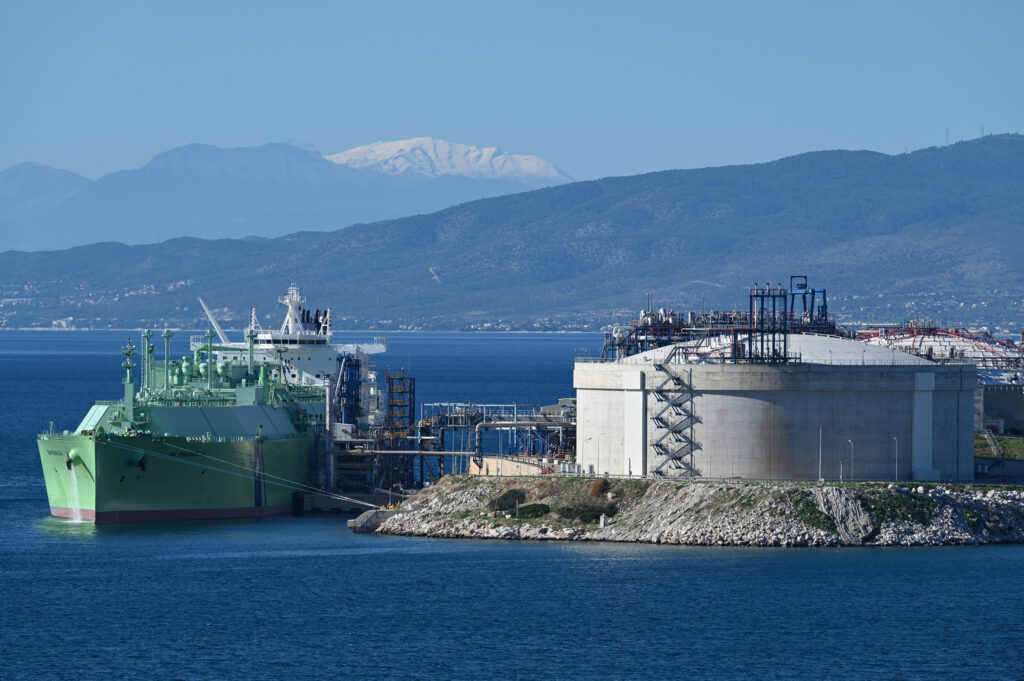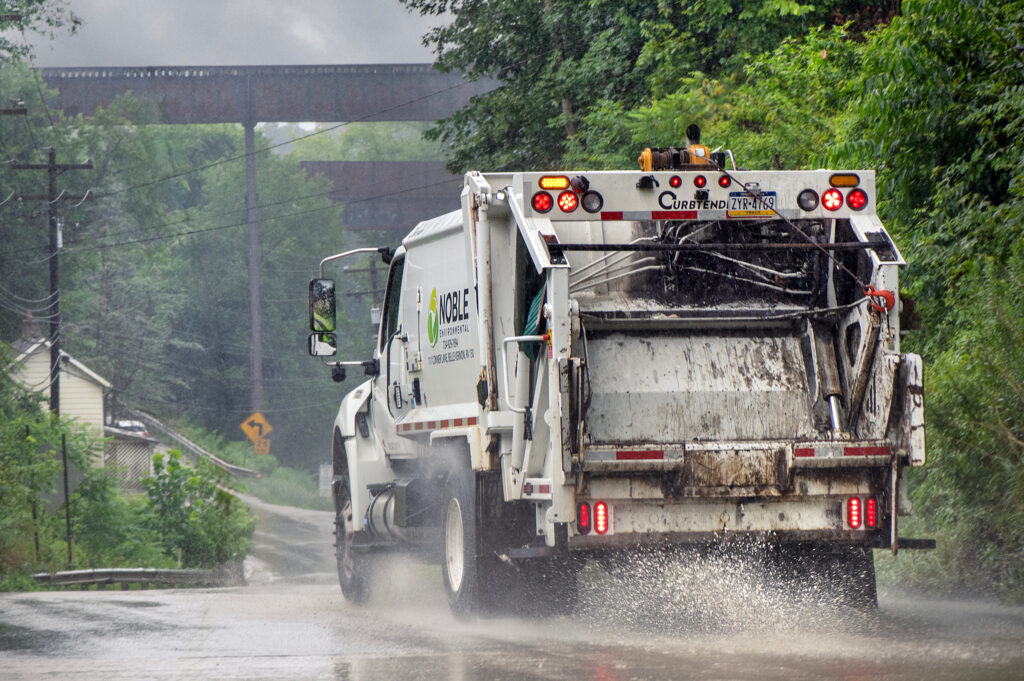This story was published in partnership with Northern Journal and is the second in a two-story series.
ELIM, Alaska—Daylight was waning as Beverly Nakarak opened the throttle of her snowmachine and sped across a flat, white expanse dotted with stunted spruce trees.
Her destination: the mouth of the Tubutulik River, a favorite ice-fishing spot about 15 miles from the small village of Elim, on the southern shore of the remote Seward Peninsula.
It was just after 7 p.m. on a Friday in early March, and Nakarak, 32, had had a busy day. After a shift at her job as a health aide at the village clinic, she had attended a funeral and community potluck.
We’re hiring!
Please take a look at the new openings in our newsroom.
See jobs
Still, as darkness descended, Nakarak went looking for tubuq, or whitefish, a staple food for many of Elim’s roughly 350 residents, including her three children.
“Gotta work, but gotta go get fish, too,” Nakarak said.
Tubutulik means “place with lots of white fish” in the local Iñupiaq language. The river and the surrounding tundra and forest are also prime spots for berry picking, moose hunting and salmon fishing. Wild runs of pink, coho, chum and king salmon still pulse up the Tubutulik every summer, and many families in Elim tend seasonal camps near the river’s mouth, where they hang, dry and smoke fish.

The area’s wealth of wild foods, and its cultural importance to the region’s Iñupiaq and Yup’ik people, explains why locals like Nakarak are so worried about a new mining development near the Tubutulik’s headwaters.
In the past two years, two companies searching for minerals snatched up hundreds of state and federal mining claims in the Darby Mountains about 30 miles north of the village.
One, a small, publicly-traded Canadian outfit called Panther Minerals, plans to drill dozens of exploratory holes over the next four years to search for uranium. The other, Alaska Critical Minerals LLC, is a private company with hardly a trace online, other than a shared address with a high-powered law firm’s Anchorage office. It has not publicly disclosed plans for its claims near Elim.
Prospectors have long suspected the Seward Peninsula—the finger of Alaska that touches the Bering Strait—could hold vast stores of uranium essential to nuclear energy and weapons. It also could host deposits of rare earth elements, a group of metals critical to modern technology.
Several decades from now, Elim could become “the uranium capital of America,” Dave Hedderly-Smith told regional radio station KNOM last year. Hedderly-Smith, who lives in Washington, is a prospector who originally staked some of the Seward Peninsula’s mining claims more than 40 years ago and is now leasing them to Panther, which hired him as an advisor.


The company, citing uranium’s use in nuclear reactors, bills itself as moving the U.S. toward low-carbon electricity and energy independence.
As miners look to cash in on rising demand for that metal, along with other elements used in energy technologies like electric car batteries and solar panels, a new era of mining has opened across the country.
The rush could transform the wild landscape and rural economy of the Seward Peninsula, which remains one of the most remote parts of Alaska.
Roughly 100 miles west of Panther’s claims, another company, Vancouver-based Graphite One, hopes to dig a huge graphite mine.


Spurred by a $37.5 million grant from the U.S. government, the graphite development is much further along. Unlike the uranium prospect, it has the backing of several Alaska elected officials and a major Indigenous-owned corporation in the region.
Panther’s project is still a very long way from becoming a producing mine. The company hasn’t started drilling core samples yet, and it typically takes several years, if not decades, of drilling and other work to determine whether a deposit is big and accessible enough to be mined profitably.
Still, Elim’s leaders say the village opposes any mining activities near the river its residents have long relied on for food and cultural practices. A consortium of the region’s 20 tribal governments also opposes the project.
“If they were to contaminate any of the water, I don’t know if the marine life would survive,” said Paul Nagaruk, Elim’s mayor. “We couldn’t have our food,” if the Tubutulik gets polluted.
A mine would be worrisome “even if we were rich” from it, he added.


Typical of many Alaska villages, just a single, small grocery store with a thin selection of fresh produce and painfully high prices serves Elim’s population. In March, a box of Cheerios was selling for nearly $14, double the price in Anchorage.
Many Elim residents shop at the store only for staples like rice. The bulk of their food comes from fishing, hunting or harvesting, particularly along the Tubutulik River.
During the last full survey of the community’s subsistence practices, in 2006, every household in the village reported consuming wild foods, and 96 percent reported consuming salmon.
On her snowmachine in March, Nakarak deftly steered through snow-covered willows, then dropped onto the frozen Tubutulik and zipped north. A few minutes later, she stopped by a slender piece of wood jutting up from the snow, likely placed there by her brother to mark a fishing hole in the ice.


“We sure like our fish out here,” said Nakarak, after hopping off her sled. “I eat dried fish all year long.”
Even in spring, when the land and sea are still frozen and blizzards regularly blow in off the Bering Sea, Nakarak tries on most days to make the 45-minute trek to the river to fish under the ice.
“My kids eat the dried fish as they dry,” she said. “I can’t keep up.”
A Uranium Rush
Panther Minerals’ plans come amid something of a uranium renaissance across the United States, driven by government and corporate interest in the element as a source of low-carbon nuclear energy.
The U.S. consumes more nuclear power than any other country. Nearly 100 reactors generate about one-fifth of all American electricity.
Fifty years ago, the U.S. was also the world’s leading producer of the fuel for that power: uranium.
But that’s not the case today.
Over the past few decades, uranium mining in the U.S. has all but ceased; production fell from 44 million pounds in 1980 to just 170,000 in 2019, federal data show. America now contributes well under 1 percent of the world’s total uranium supply.
That has left U.S. reactors dependent on mines in Kazakhstan and Canada, and factories in Russia and China that process the element into material that can be used in power plants.


Meanwhile, there has been rising pressure from U.S. government officials, corporate leaders and some climate advocates to build more nuclear power plants. Their calls are aimed partly at reducing planet-warming carbon emissions, but also at meeting soaring electricity demand from the data centers that power artificial intelligence, cryptocurrency mines and other new energy-intensive industries.
Nuclear reactors can provide a steady, on-demand supply of electricity, which boosters say makes them more reliable than weather-dependent solar and wind farms.
Bipartisan support for the nuclear industry is growing. President Joe Biden last year set a goal for the U.S. to triple the country’s nuclear capacity by 2050. And President Donald Trump promised on his first day in office to “slash the red tape” and approve new reactors.
Mining industry supporters say that dependence on foreign uranium leaves the nuclear power supply vulnerable to global trade tensions.
In anticipation of greater demand, uranium prices have shot up, more than doubling in the past five years.
The metal’s surge in value has led companies to rush to find new deposits or to re-open long-shuttered mines across the American West. New developments and proposals have cropped up in Arizona, Wyoming and Texas—and now in far western Alaska, near the shores of the Bering Sea.
“There are a lot of reactors, and until those reactors go out of business, they’re going to need uranium,” Hedderly-Smith, the prospector, said in an interview. “Uranium has a long-term customer base that looks like it’s going to get bigger.”
A Chance Discovery
Unlike gold and silver, Alaska is not exactly famous for uranium. There are traces of the element across the state, but only two areas are known to have substantial mining potential, according to state data.
One is in the mountains near Elim. The other is more than 1,000 miles away — in Southeast Alaska, where the state’s only producing uranium mine shut down in 1971.


Panther Minerals’ prospect, named after a tributary of the Tubutulik River called Boulder Creek, is Alaska’s largest known uranium site, holding an estimated 1 million pounds, according to state geologists. It sits within a mile of the upper Tubutulik; some of Panther’s claims lie beneath the river itself.
Uranium was discovered in the area in 1977 when a helicopter crew working on a different mining project was flying over the area and had turned on a radiation detector, just to see what would happen.
The device “started to go crazy,” Hedderly-Smith said. “Totally a happenstance thing.”
Since then, two companies have spent more than $3 million—first in the early 1980s and again between 2006 and 2008—to figure out if there’s enough uranium in the upper Tubutulik watershed to support a mine. Much more work is needed to determine if a mine would be economically viable, Hedderly-Smith said.
Panther officials did not respond to requests for comment.
The company’s mining claims span more than 30 square miles across two prospects: Boulder Creek and a more recent discovery to the north called Fireweed.
“I wouldn’t be surprised if there are five or six companies operating exploration programs in the area in four or five years,” Hedderly-Smith said. “I think it’s a uranium hotspot.”


Hardrock mining always comes with a host of potential problems, from acid drainage to chemical spills and heavy metals pollution. Uranium poses some additional risks, according to Paul Locke, an environmental health scientist at Johns Hopkins University who has studied the impacts of uranium mining.
“The first difference is you’re dealing with something that’s radioactive,” Locke said. “You don’t want to concentrate it in the environment,” he added, because high levels of radiation can cause cancer.
Ultimately, Locke said, the level of risk depends on the specifics of a mine, like its location, size, the type of deposit and the safety practices of the company operating it.
If a mine were ever built near Elim, it might look more like a natural gas field than a conventional mine with open pits or underground tunnels. Boulder Creek, like several other uranium deposits in the U.S., probably lends itself to a different kind of mining called in situ leaching, Hedderly-Smith said.
That process involves drilling wells, shooting liquid into ore to dissolve the uranium underground, then pumping it up to the surface.
Supporters say this method is less environmentally destructive than conventional forms of mining, because it doesn’t generate tailings or huge piles of waste rocks and leaves a smaller footprint on the surface.
But skeptics say pumping chemicals deep into the ground can create other problems, including groundwater pollution.
“You’re trading one risk for another,” said Paul Robinson, a researcher and advocate in New Mexico who has focused on uranium mining for several decades. “Groundwater management is a really tough problem, and in situ puts groundwater at risk.”
Nakarak, the ice fisher in Elim, knew little about uranium when a Vancouver company’s helicopters started flying in and out of the village, during a previous exploration effort two decades ago. She was a student at Elim’s school at the time.
“I was real scared back then, thinking they were going to mine uranium,” Nakarak said. “And then I was going to have nothing to eat, no more camp, no more freshwater.”


With the help of a school administrator, Emily Murray, Nakarak and a few other students at the time formed a group called Elim Students Against Uranium to protest the company, Triex Minerals.
Facing local opposition and a slump in uranium prices, Triex ended its work in 2008. But now, with Panther’s new proposal, Elim’s student activism has seen a revival.
Several young residents held a demonstration this spring during the Iditarod, the 1,000-mile sled dog race, which takes teams through Elim on their way to Nome. As mushers passed by, students brandished signs that read, “Nuclear Power? No Thanks” and “Elim Says No To Mining Uranium.”
“What Makes Us Rich”
Miners have been digging up minerals from the Seward Peninsula since the Nome gold rush of 1900, and the industry has been a pillar of the region’s economy ever since. But some residents now question whether a new wave of mineral development is worth the risks.
Murray, the Elim school’s secretary and vice president of the Norton Bay Watershed Council, said water quality and impacts to traditional foods are her biggest concerns.
“It’s where we get all of our salmon,” she said of the Tubutulik River. “That’s what makes us rich.”
In interviews, several residents echoed the concern about Elim’s fish and wildlife.
“I just can’t live off food from the store,” said Russell Saccheus Jr., 24, who hunts moose near Panther’s prospect and is one of a handful of commercial salmon fishermen in Elim.


Some residents, including Saccheus, acknowledged that the village needs more jobs. It has no major industry; its main employers are the school, health clinic, and tribal and municipal governments, according to Nagaruk, the mayor.
Mara Daniels, Elim’s tribal coordinator, said her daughters, who moved away, would return if they could find jobs. “There ain’t no work here,” she said.
Still, Daniels said that potential jobs at a uranium mine don’t outweigh the risks that such a project would pose to the Tubutulik River.
Residents also have no guarantee of benefits beyond employment. Some Alaska mining prospects are on land owned by Alaska Native corporations and could produce royalties and dividends for those companies and their Indigenous shareholders.
But Panther’s claims are on state and federal property.
Hedderly-Smith, who’s leasing claims to the company, could profit if a mine gets built. He said Elim’s concerns are “not wholly unwarranted” but “highly misguided.”
“They seem to think that whoever produces uranium there is going to dump a lot of uranium waste into the river,” said Hedderly-Smith. “That just simply isn’t the case.”
Mining could boost the local economy with minimal impacts to the environment and traditional foods like salmon, he added.
Panther submitted a plan of operations to federal regulators last year and received a permit from the state in October for a five-year exploration program.
Elim’s tribal government and the Norton Bay Watershed Council, a clean water advocacy group formed by Murray and a consultant based in Homer, Alaska, appealed the state permit. The group says it’s concerned about the effects of exploratory drilling on water quality and community health.


Regulators haven’t decided on the appeal and haven’t provided a timeline for a decision, according to Lorraine Henry, a spokesperson for the Alaska Department of Natural Resources, the state’s land management agency.
Even if it keeps its permit, Panther hasn’t announced its plans for the summer exploration season and still might not move ahead with its drilling proposal.
At the end of March, the company had less than $2,000 in cash, according to a financial statement filed with securities regulators in May. That’s far less than what many exploration companies spend on a summer of drilling in Alaska. Its stock price also has fallen sharply: As of mid May, Panther’s stock was trading at about 1 cent per share, down from 50 cents last July.
Elim residents still remain wary. Some said they want to see the area formally protected from uranium development—so that even if Panther doesn’t continue with its project, other companies won’t be able to move in later.
Through an Anchorage attorney, the other company with claims in the area, Alaska Critical Minerals, declined to comment.
Nakarak, the mother and ice fisher, doesn’t expect the spectre of a mine to fade completely.
“It’s a thing that will always come back,” she said. “So we’ve got to be prepared.”
Nakarak didn’t end up catching any fish that evening in March. There had been a recent snow storm, and her brother’s hole had frozen over. Nakarak has relied on other fishermen’s holes ever since she lost her auger—an expensive tool used to cut through ice—during a storm in 2022, she said.
Unable to drill into the frozen river herself, she zoomed back to the village in the dark, knowing she’d be back out again soon.
Her children would have to wait just a little longer for a fresh batch of whitefish.
This story was supported by a grant from the Alaska Center for Excellence in Journalism.
About This Story
Perhaps you noticed: This story, like all the news we publish, is free to read. That’s because Inside Climate News is a 501c3 nonprofit organization. We do not charge a subscription fee, lock our news behind a paywall, or clutter our website with ads. We make our news on climate and the environment freely available to you and anyone who wants it.
That’s not all. We also share our news for free with scores of other media organizations around the country. Many of them can’t afford to do environmental journalism of their own. We’ve built bureaus from coast to coast to report local stories, collaborate with local newsrooms and co-publish articles so that this vital work is shared as widely as possible.
Two of us launched ICN in 2007. Six years later we earned a Pulitzer Prize for National Reporting, and now we run the oldest and largest dedicated climate newsroom in the nation. We tell the story in all its complexity. We hold polluters accountable. We expose environmental injustice. We debunk misinformation. We scrutinize solutions and inspire action.
Donations from readers like you fund every aspect of what we do. If you don’t already, will you support our ongoing work, our reporting on the biggest crisis facing our planet, and help us reach even more readers in more places?
Please take a moment to make a tax-deductible donation. Every one of them makes a difference.
Thank you,







